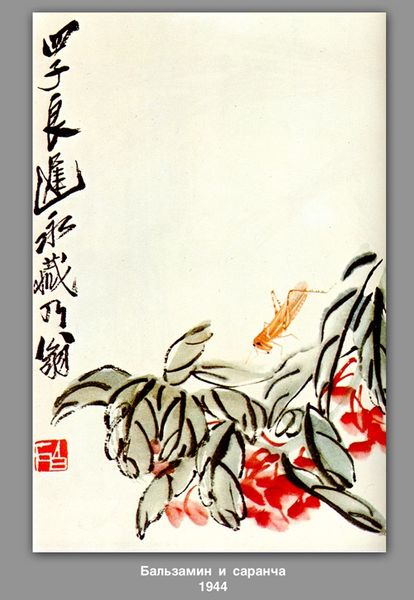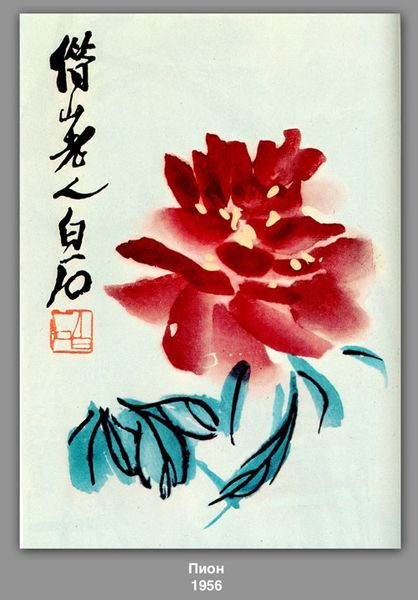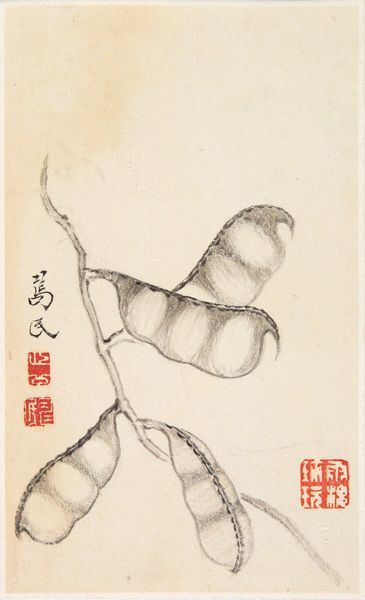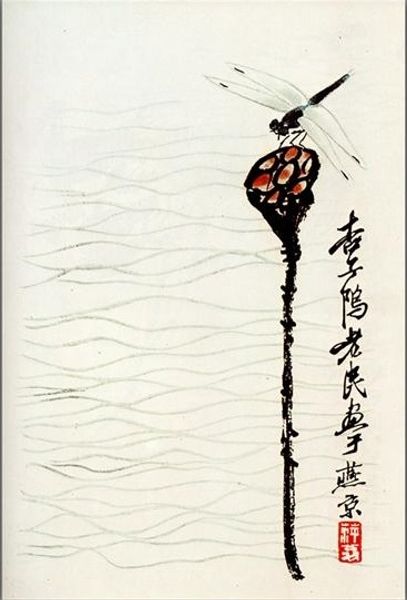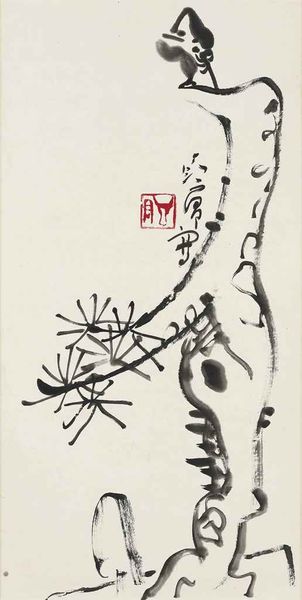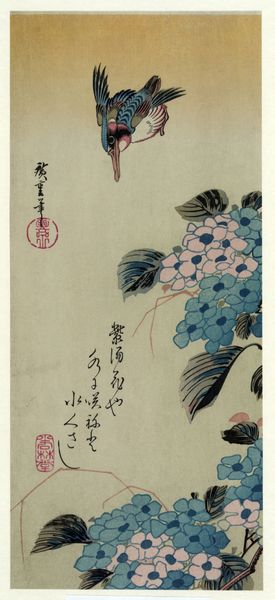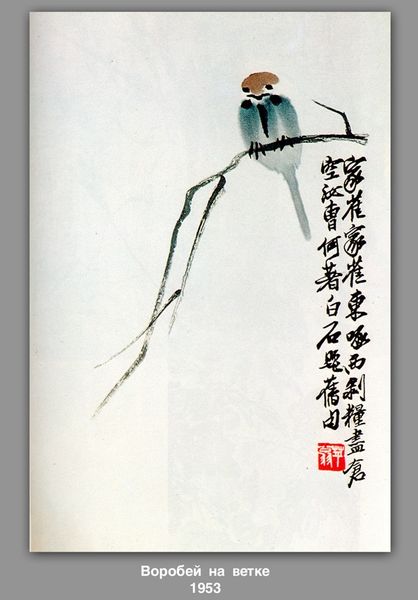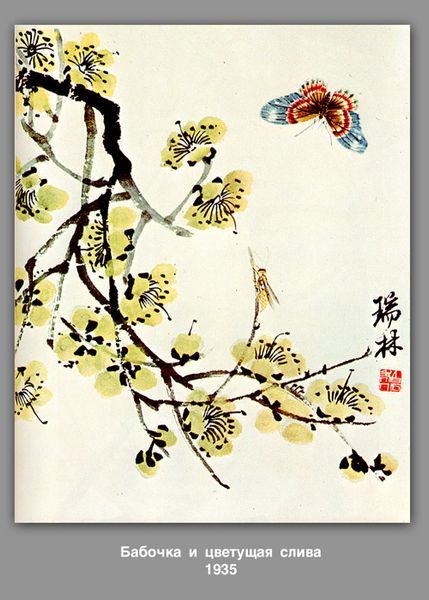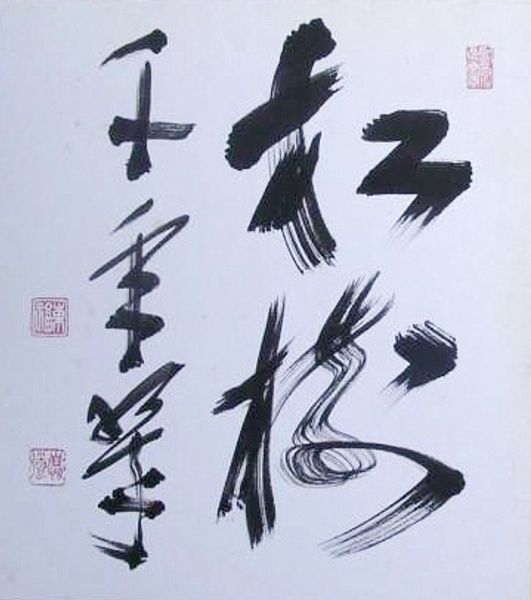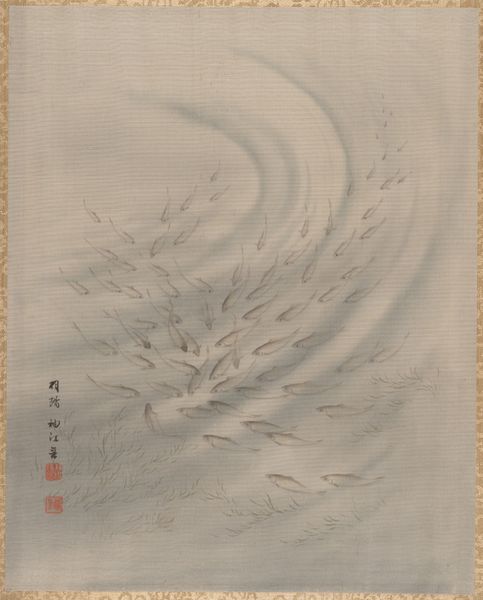
#
pastel soft colours
#
ink paper printed
#
traditional media
#
flower
#
collage layering style
#
pastel colours
#
fashion and textile design
#
feminine colour palette
#
plant
#
watercolour bleed
#
watercolour illustration
#
botany
#
remaining negative space
Copyright: Public domain China
Curator: This is Qi Baishi's "The Branch of Wisteria," painted in 1944. Editor: It feels light, almost ethereal. The pastel colors create a sense of delicate beauty, and the composition has this lovely, cascading rhythm. Curator: The technique is indeed quite masterful. Notice the strategic use of negative space and how the watercolor bleeds, adding to the feeling of spontaneity, a hallmark of literati painting. He balances the abstract quality of brushstrokes with the concrete form of the plant. Editor: I'm also struck by the context. Painted in 1944, during a tumultuous period, such a piece offers a kind of quiet resistance. It's a gesture towards the enduring power and resilience of nature amidst the chaos of war, a form of solace during an intensely masculine and violent moment in time. Curator: I agree. Looking closely, the contrast between the ink-drawn leaves and the colored blossoms reveals his understanding of classical methods while also hinting at experimentation. Qi Baishi innovatively blends traditional calligraphic lines with color washes. Editor: Absolutely. And considering wisteria's symbolism – longevity, immortality, remembrance – this artwork then also serves as a poignant reflection on cultural memory. The artist uses his distinct feminine color palette as a hopeful visual claim, a dedication to these enduring feminine attributes in an era overwhelmed by brute power. Curator: Precisely. Baishi challenges conventional notions of formal technique, skillfully manipulating color density and brushstrokes to build an ethereal but meticulously designed aesthetic experience. Editor: And thinking about audiences, I think this delicate piece carries significant weight; an almost revolutionary message in a patriarchal society, urging people to reconsider ingrained values of traditionalism through new feministic eyes. Curator: A lovely final thought. The visual elements harmonize to create an unforgettable piece, showing how much we can gain through detailed examination. Editor: The history deeply impacts the way we connect to such imagery. It's beautiful how art can encourage dialogue between these two things.
Comments
No comments
Be the first to comment and join the conversation on the ultimate creative platform.
